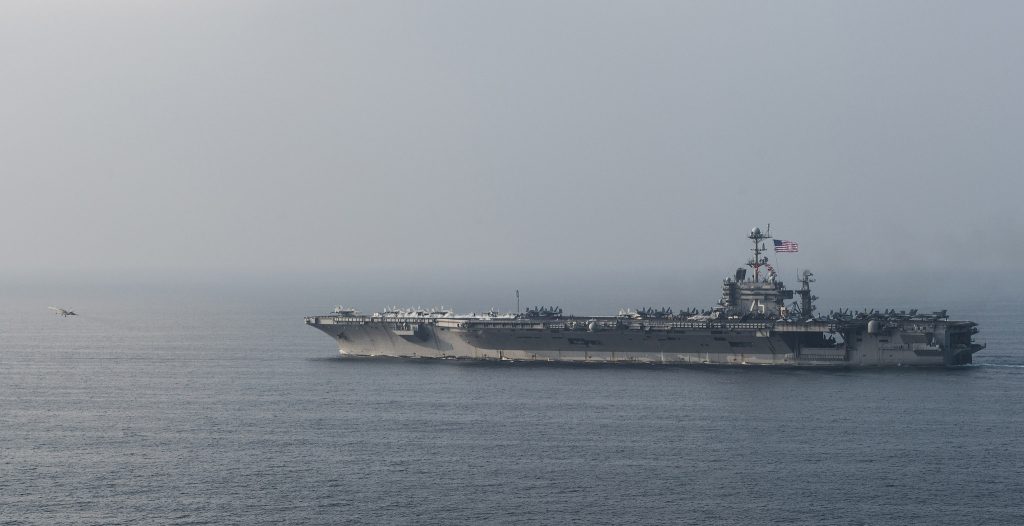
USS Harry S. Truman
WASHINGTON: Top lawmakers are blasting the Pentagon’s decision to retire one of the Navy’s 11 nuclear-powered aircraft carriers two decades early, with one prominent Senator calling the move “mind-boggling.”
The proposal to cancel the USS Harry S. Truman’s mid-life refueling in 2024 means the ship would run out of nuclear fuel by the late-2020s, about 20 years before it was originally scheduled to leave service.
A senior member of the Senate Armed Services Committee, Sen. Tim Kaine of Virginia — where the Truman was built and is based — told Breaking Defense that, after Congress recently granted the Pentagon authorization to go ahead with a block buy of two new aircraft carriers, “it makes no sense for them to turn around and propose scuttling funding for another aircraft carrier that has over 20 years of service left.”
A new carrier costs over $7 billion, a mid-life overhaul about $6.5 billion.
“If these reports are true,” Kaine added, “DoD should expect a lot of questions from me about why they would even consider this mind-boggling proposal.”
Now, Kaine’s a Democratic Senator. But a Republican House member, fellow Virginian Rob Wittman, joined him in objecting to the Navy plan. Wittman told Breaking Defense that keeping carrier’s mid-life Refueling & Complex Overhauls (RCOH) on schedule “is critical to meeting combatant commander’s demand for carrier strike groups.”
Wittman, ranking member of the House seapower subcommittee, added: “We have made a significant investment in these ships, and I am perplexed why anyone would consider taking the cornerstone of the United States Naval Force and allowing it to atrophy.”
But it’s not just Virginians who’re protesting. The chairman of the House Armed Services Committee’s seapower subcommittee, Rep. Joe Courtney, told reporters earlier this week that in the upcoming budget wrangling, the Navy’s plan for the Truman is a non-starter. The chance, he said, “of it getting any endorsement in the seapower mark this year, I think, is zero.”
Courtney’s from New England, which builds submarines and destroyers, not carriers, and might even benefit from the Navy reallocating carrier funds. That makes it hard to portray his objections as mere pork-barrel parochialism.
Nuclear-powered aircraft carriers have been the backbone of US naval presence around the globe for decades, but the Navy is struggling to to modernize the fleet. Building new Ford-class carriers, adding hundreds of F-35 stealth fighters, starting the Columbia-class submarine program, and building more advanced Aegis destroyers all require fixing complex problems in high-tech systems — and, along with buying a less technological revolutionary frigate, all these programs have big costs.
Even the long-held goal of building a 355-ship fleet has been questioned in recent weeks by Chief of Naval Operations Adm. John Richardson, who has said a study to be released later this year could push that number downward.
Breaking Defense reported Friday that as part of its upcoming budget submission to Congress, the Navy will also propose slashing two amphibious ships from its five-year shipbuilding plan.
The service has also faced a number of maintenance and training shortfalls which led to the deaths of 17 sailors in catastrophic accidents aboard the destroyers McCain and Fitzgerald in 2017. Leaders also recently admitted that 70 percent of their destroyers are unable to make it out of planned maintenance availabilities on time. Those delays means the ships still at sea have to work longer and harder — which means they come in for maintenance with more problems, which means their rehab also runs late. It’s a vicious cycle the Navy hasn’t yet managed to escape.



